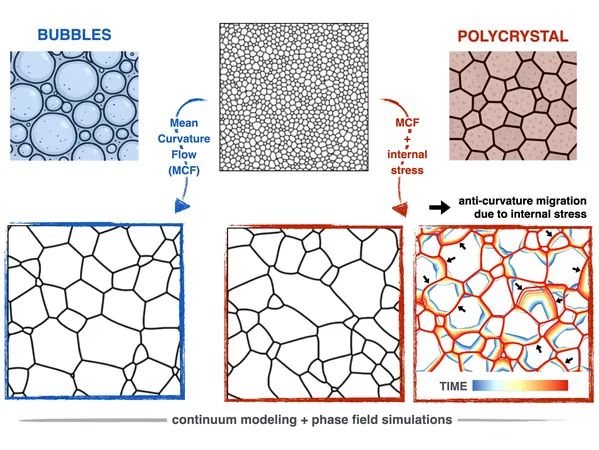
Unlocking the Red Planet: The Simplified Three-Step Blueprint to Terraform Mars
2025-06-14
Author: Nur
The Science of Terraforming: A Visionary Dream or a New Reality?
Terraforming Mars has long danced in the realm of science fiction, captivating minds with the idea of transforming the Red Planet into a habitable world. Recently, scientists have dared to dream that this incredible feat might soon be achievable, thanks to groundbreaking research that presents a straightforward three-step approach.
Step One: Warming the Red Planet’s Icy Surface
Recent studies reveal that Mars is home to immense ice reserves that could potentially give rise to oceans up to 1,000 feet deep. The key? Raising the planet’s temperature by around 30 degrees Celsius. Researchers suggest revolutionary methods like using solar sails to amplify sunlight and dispersing aerosols to kickstart a greenhouse effect. Additionally, applying silica aerogels to the Martian surface could help boost local heating. Together, these techniques might warm Mars within a century.
Step Two: Introducing Extremophiles to Kickstart Life
Once the temperature rises, it’s time to introduce life. Enter extremophiles—harsh-weather-loving microorganisms. The plan involves genetically engineering these resilient creatures to withstand Mars’ thin atmosphere and brutal temperatures. They would thrive in the salty brines that emerge as ice melts, gradually transforming the Martian chemistry and preparing the ground for a sustainable ecosystem.
Step Three: Cultivating a Breathable Atmosphere
The grand finale is creating a viable atmosphere for diverse life forms. Scientists propose erecting massive domed habitats to initially contain a breathable atmosphere of 100 millibars—about a tenth of Earth’s sea-level pressure. This would be a long-term task, as naturally developing plant life would contribute oxygen, a process that could unfold over a millennium. However, with innovative techniques to extract oxygen from melted water, this timeline might be accelerated—but research is still needed on Mars’ resource availability.
A Cautionary Perspective: The Ethics of Terraforming
While the ideas are bold and thrilling, they come with pressing ethical considerations. As coauthor Nina Lanza emphasizes, terraforming would alter Mars forever, obliterating opportunities to study its original state and history. Would we lose vital insights about planetary evolution and potential forms of life? These questions weigh heavily on the future of Martian exploration.
The Road Ahead: Challenges Yet to Overcome
For now, these plans are highly speculative, yet they reveal humanity's ambition to reach the stars. Despite not having proven our ability to send payloads back from Mars or the uncertainties surrounding the SpaceX Starship, the dream lives on. As we embrace new technologies and unravel the mysteries of the cosmos, the possibility of a terraformed Mars grows closer than ever.
The Final Countdown: A Journey Worth Taking?
As we stand on the brink of interplanetary colonization, the question remains—will we seize the chance to reinvent our neighboring planet, or will caution and ethics hold us back from a cosmic renaissance? Only time will tell if humanity will embark on this legendary journey to transform Mars into a new frontier for life.





 Brasil (PT)
Brasil (PT)
 Canada (EN)
Canada (EN)
 Chile (ES)
Chile (ES)
 Česko (CS)
Česko (CS)
 대한민국 (KO)
대한민국 (KO)
 España (ES)
España (ES)
 France (FR)
France (FR)
 Hong Kong (EN)
Hong Kong (EN)
 Italia (IT)
Italia (IT)
 日本 (JA)
日本 (JA)
 Magyarország (HU)
Magyarország (HU)
 Norge (NO)
Norge (NO)
 Polska (PL)
Polska (PL)
 Schweiz (DE)
Schweiz (DE)
 Singapore (EN)
Singapore (EN)
 Sverige (SV)
Sverige (SV)
 Suomi (FI)
Suomi (FI)
 Türkiye (TR)
Türkiye (TR)
 الإمارات العربية المتحدة (AR)
الإمارات العربية المتحدة (AR)